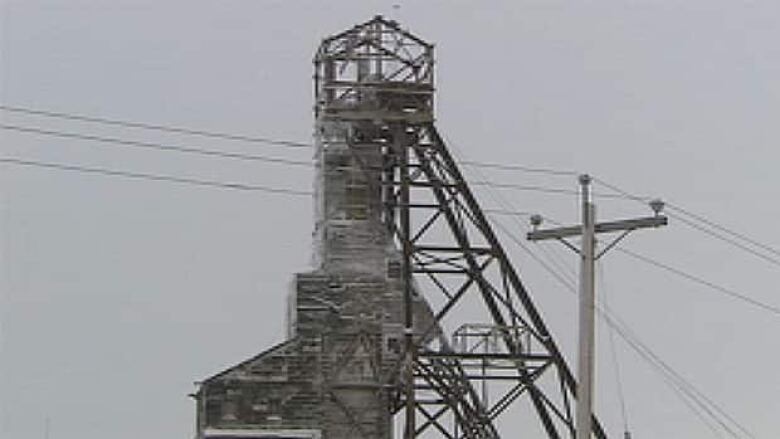Debate continues over Giant Mine clean-up
Groups worried clean up team resisting recommendations made after a 5-year review

Groups that have been part of the Giant Mine environmental assessment say they're worried the team in charge of cleaning up the former gold mine is resisting recommendations made after the five-year review.
The Mackenzie Valley Review Board approved the clean-up plan, but added 26 measures to reduce environmental impacts and the resulting public concerns. The territorial government, and the federal clean up team has now signed off on an analysis of those recommendations. They say following all of them would drive up the cost and delay the work, which could end up putting the public at risk.
The Giant clean-up team has a meeting scheduled with Alternatives North, the Yellowknives, and the City of Yellowknife Thursday to discuss the document. However, the operations manager says they dont intend to to revise their analysis but want to explain their concerns.
Environment minister defends the analysis
Michael Miltenberger, the N.W.T. environment minister, defended the analysis in the legislature. We've accepted some, we've modified some, and we've rejected some, he said. So it's not accurate to say we've rejected the recommendations. We have an obligation to be thorough and do due diligence."
"No responsible government would be wise just to take things at face value without taking a look at them, especially because we've invested the hundreds of millions of dollars we have and will continue to invest in this project."
The federal minister of Aboriginal Affairs has the final say in whether to accept or reject the recommendations. Miltenberger and the project team say the analysis was meant to provide information to the officials who will make that decision.
No one wants to get this done more than theYellowknives- Todd Slack, YellowknivesDene
But groups that were part of the environmental assessment say the federal government dragged its feet through the long review process and cant justifiably make the claim that further delays will jeopardize the clean-up.
"No one wants to get this done more than the Yellowknives," says Todd Slack, a regulatory specialist with the first nation. "They're looking over at Giant, or they're in their boats or on the land. They're not sitting in Gatineau on the 10th floor. They want this project to move ahead. You can do things quickly, or you can do them good and in this case, a shoddy solution just isn't going to work."
Slack says he doesn't see any reason that health studies couldn't be done while clean-up work proceeded on the site.
Independent oversight needed

Slack also says they need an environmental agreement to set up independent oversight before work starts. "Something that binds the project to living up to what they say they're going to do. We're not asking for the moon or the stars here."
Alternatives North, a social justice group in Yellowknife, backs that claim. Kevin O'Reilly has been pushing for oversight for years. He doesn't buy the clean-up team's concern that a proposed oversight group would have too much authority to dictate how money is spent or that it would lead to delays.
O'Reilly says oversight is necessary to ensure the public has faith that the contaminated site will be cleaned up responsibly. He says several models for such a body already exist in the territory at the diamond mines.
"The corporate decisions of those diamond mines haven't been overturned by the independent oversight bodies, they haven't resulted in the oversight bodies allocating money by the company, that's just crazy," he says.
People are used to how those environmental agreements work for the diamond mines. They like that model and that's all we're asking for in the context of Giant."
The team met with parties to the environmental assessment about a dozen times in 2012 to discuss setting up oversight. An environmental agreement was drafted, but never finalized. O'Reilly and Slack say the Giant project team walked away from the process.
Slack says that if representatives from Aboriginal Affairs had flagged concerns earlier, they could have had an environmental agreement finished already. "They were in the room the entire time. They could have made changes.
The Giant project team now estimates independent monitoring will cost between $350,000 and $800,000 annually and negotiating an oversight body could delay the clean-up work.
Delays could put public at risk: feds
Jane Amphlett, manager of operations with the Aboriginal Affairs clean up team, maintains they are not rejecting the report or any of the recommendations.

"We're just identifying some of our concerns and we want to find a way to definitely, absolutely address public concerns but in a way that we're not delaying the project too much," she says. "There are so many site risks out there, we do want to address those as soon as possible."
She says the clean-up team wanted to point out some of the challenges posed by the Review Board's report. For instance, that a human health risk assessment would have to be done before the clean-up team applied for permits to clean up the site.
The report also asks that Baker Creek be diverted. The project team says that work has never been studied and could require an environmental assessment of its own. They say they don't know if water would still have to be treated if the creek flowed north of the site.
Amphlett says her office has no contact with the people within the same department who will have a say in whether the measures get approved.
The parties have until the end of the month to submit their own responses to the Review Board's report.
The federal Aboriginal Affairs minister still has to respond to the report. He may request to modify recommendations. If measures are rejected outright, the project may go to a further level of scrutiny, an environmental impact review, which could take years.












_(720p).jpg)


 OFFICIAL HD MUSIC VIDEO.jpg)
.jpg)



























































































